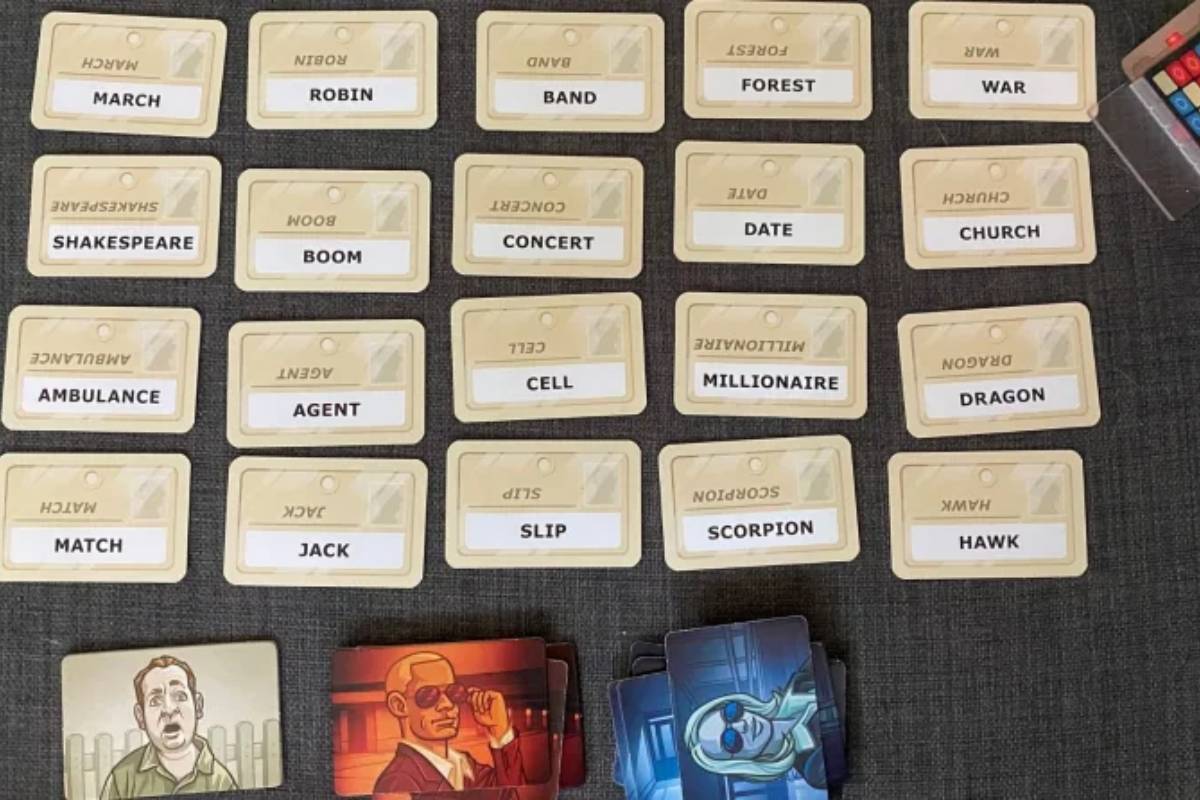Codenames is a word-association board game that has gained widespread popularity since its release. It’s a game that blends strategy, creativity, and teamwork, making it a hit at family gatherings, parties, or even casual hangouts with friends. In this article, we’ll explore the mechanics of Codenames, how to play, and why it’s so addictive. Whether you’re new to the game or a seasoned player, you’ll find insights into the rules, gameplay, and variations that make Codenames an excellent choice for your next game night.
What is Codenames?
Codenames is a game that revolves around words, but with an added twist of association. The game is played with two teams: Red and Blue. Each team has a spymaster, who gives one-word clues to help their team identify the correct words on the board. The goal is to guess all your team’s words before the opposing team does. But there’s a catch—each word on the board has a specific association, and one of the words is linked to a “game-ending” word known as the assassin.
The beauty of Codenames lies in its simplicity and the brain workout it offers. The players need to think creatively and strategically to interpret the clues and make educated guesses.
How to Play Codenames?
Setting Up the Game
To start, you need a Codenames board, which consists of 25 cards laid out in a 5×5 grid. Each card has a word written on it, and the words are related to various categories like animals, objects, places, actions, and more.
The spymasters for each team sit on one side of the table, while the rest of the players are on the other side. The spymasters are the ones who know which words belong to their team. Each team has its own set of words to guess, which are marked on a secret key card that only the spymasters can see.
The Rules of the Game
Each round starts with the spymasters giving one-word clues to help their team guess the words on the board. A clue consists of one word followed by a number, for example, “Ocean 3.” This means that the spymaster is suggesting that three of the words on the board are related to the ocean. The number tells the team how many words they should associate with the clue.
The team members take turns guessing the words they think are related to the clue. After each guess, the spymaster indicates whether the word is correct, incorrect, or if it belongs to the opposing team. If the team guesses a word correctly, they cover it with their team’s colored card. If they guess wrong, they cover it with a neutral card or the opponent’s card.
The End of the Game
The game ends when one team has successfully guessed all their words or when a team accidentally guesses the assassin word, which results in an immediate loss for that team. This makes Codenames a game of risk as well as strategy.
The Importance of Clue-Giving
The key to winning Codenames lies in the spymaster’s ability to give effective clues. A good spymaster will be able to find connections between words and give clues that lead their team to the correct words. However, it’s important to note that the clues cannot be too obvious or too vague. If the clue is too obvious, the opposing team might guess it first. If the clue is too vague, the team might make incorrect guesses, helping the opposing team.
For example, if one of the words on the board is “Apple” and another is “Tree,” the spymaster might give the clue “Fruit 2” to encourage the team to guess both words.
Variations of Codenames
Codenames can be played in different variations, which keeps the game fresh and interesting. These variations can add new layers of strategy, increase difficulty, or make the game more inclusive for different group sizes.
Codenames for Smaller Groups
Although Codenames is traditionally played with four or more players, it can be adapted for smaller groups, even with just three players. In this version, players can play cooperatively, where the objective is to guess all the words correctly without the competition from an opposing team. This cooperative mode makes Codenames a more relaxed experience but still requires strategic thinking.
Codenames: Duet
Codenames: Duet is a cooperative version of the game specifically designed for two players. In this version, both players work together to try to uncover all 25 words on the grid without guessing the assassin word. The game becomes a race against time and adds an extra layer of challenge as players need to share the responsibility of clue-giving and guesswork.
Codenames: Pictures
For players who prefer visuals, Codenames: Pictures offers a variant that uses images instead of words. The mechanics remain the same, but instead of connecting words, players are connecting images. This variant makes the game more accessible to younger players or anyone who might find word associations difficult.
Why is Codenames So Fun?
A Brain Workout
Codenames is more than just a fun game—it’s also a great mental workout. It requires players to think critically and creatively to make associations between seemingly unrelated words. Players must also have good communication skills to convey the correct clues and understand their teammates’ thought processes. This makes Codenames an ideal game for improving cognitive abilities, enhancing memory, and fostering teamwork.
Social Interaction
One of the main reasons Codenames is so enjoyable is because of the social interaction it encourages. Players must work together, communicate effectively, and even engage in light-hearted banter while playing. The back-and-forth exchange between the spymaster and the team, as well as the discussions among the teammates, creates an environment of fun and camaraderie.
Suitable for All Ages
Codenames can be enjoyed by people of all ages, from kids to adults. The simple concept of word association is easy to grasp, yet the challenge of connecting words requires a high level of strategic thinking. This makes Codenames a game that can be played by friends, family, or coworkers, regardless of age or skill level.
Tips for Winning Codenames
Think Outside the Box
Codenames is a game of creativity. Sometimes, the best clues are the ones that force your team to think outside the box. A good spymaster doesn’t just stick to obvious connections—they look for more abstract associations between words. The more creative the clue, the more likely it is to lead your team to the correct words.
Use the Number Wisely
The number in the clue is just as important as the word itself. Be strategic with the number you use. For example, if you have a clue that can relate to several words, using a higher number helps your team guess multiple words at once. However, it’s important not to go too high, as this can lead to confusion or incorrect guesses.
Keep an Eye on the Opposing Team
While you focus on your own team’s guesses, it’s also important to keep an eye on the opposing team. Pay attention to the words they’re guessing and the clues they’re getting. This can give you a better understanding of their thought process and help you avoid giving clues that may lead them to your team’s words.
Avoid the Assassin Word
Above all, it’s important to avoid the assassin word. A good spymaster will always be aware of the assassin word and ensure that their clues don’t lead their team to it. Remember, the assassin word is a game-ender, and once it’s guessed, the game is over.
Conclusion
Codenames is a fantastic game that combines strategy, creativity, and teamwork. Whether you’re playing with a large group or just a few friends, Codenames is a game that brings people together and offers endless fun. With its simple rules, challenging gameplay, and numerous variations, Codenames is a must-have game for any board game collection.
So, gather your friends, pick a team, and get ready for an exciting game of word associations. Codenames is sure to become a favorite at your game nights!

